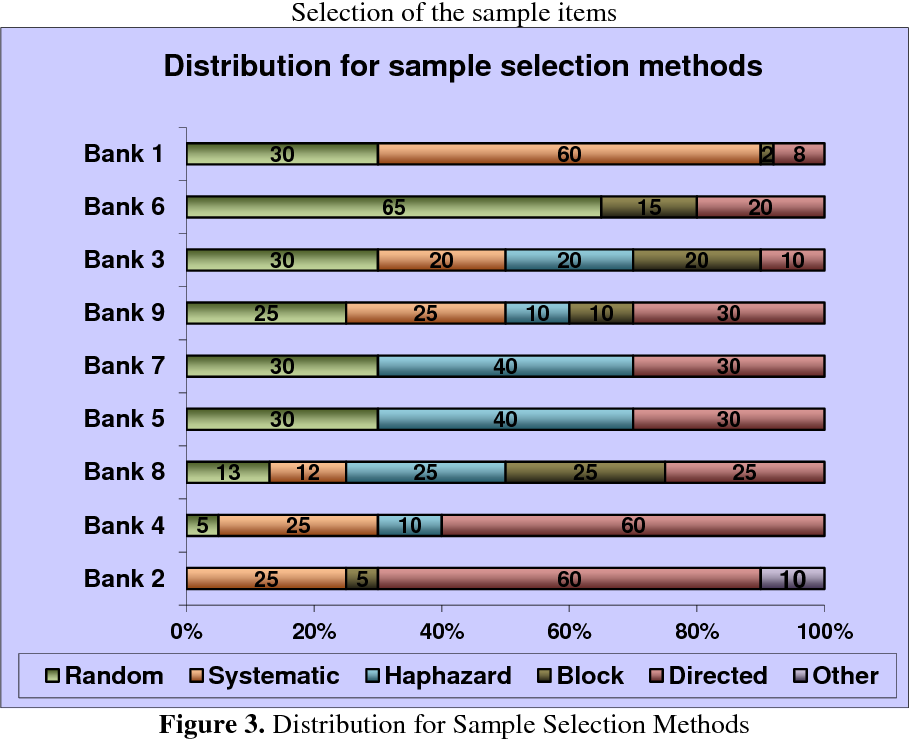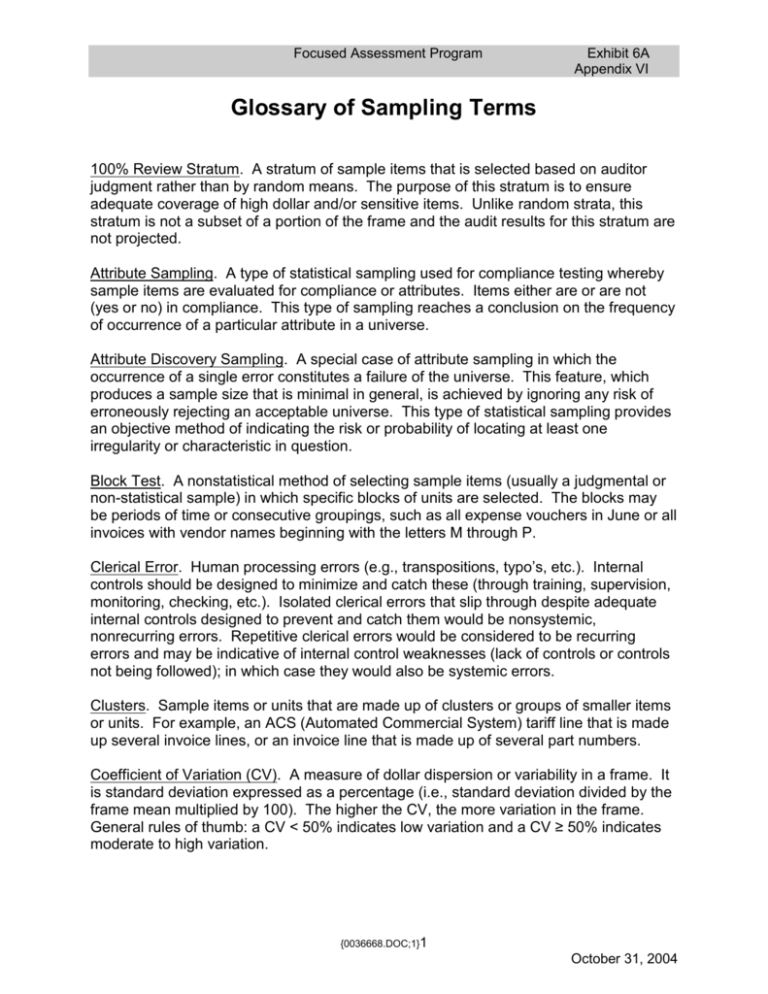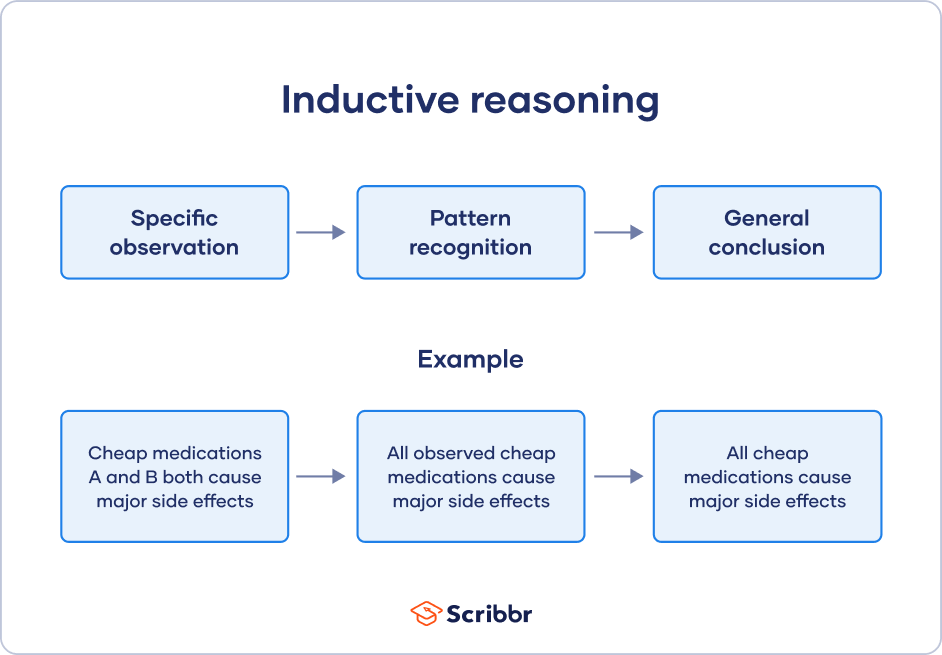Statistical or Nonstatistical Sampling Which Approach Is Best
Monetary-unit sampling MUS is used. It can make sense to use non-statistical sampling when the population size is very small.

Non Statistical Sampling In Internal Auditing And Control Assurance
Reduce the level of audit risk and materiality to a relatively low amount.

. In this case it is not efficient to spend the extra time to set up a statistical sample. Others feel a non-statistical approach can be. Eliminate the risk of non-sampling errors.
This guideline applies to non-statistical sampling. Statistical andor non-statistical sampling techniques by inter nal auditors. If the population members are dissimilar or there are key items a non-statistical approach is most suitable.
Statistical sampling is an objective approach using probability to make an inference about the population. An advantage of statistical sampling over non-statistical sampling is that statistical sampling helps the auditor to A. The population contains both very high and very low recorded amounts.
The reliability or confidence level of this type of sampling relates to the number of times per 100 the sample will represent the larger population. Nonstatistical sampling does not involve the use of statistical calculations. If the population members are dissimilar or there are key items a non-statistical approach is most suitable.
In statistical or nonstatistical sampling methods used in substantive testing an auditor most likely would stratify a population into meaningful groups if A. This approach is also useful in areas where specific records contain sensitive information and so must be examined. Define factors that affect the.
Statistical sampling is an approach to sampling that involves random selection of the sample items and the use of probability theory to evaluate the sample results including the measurement of sampling risk. Some practitioners believe a statistical sample is more defensible. Statistical sampling is a mathematical approach to inference whereas nonstatistical sampling is a more subjective approach.
The method will determine the sample size and the selection criteria of the sample. It relies on the subjective sampling selections by the auditor and has less of a standardized approach. Statistical methods is more objective and representative in relation to the total population compared to the sample selected by non-statistical methods.
Statistical sampling is more objective and uses probability to determine the appropriate sample size. The primary difference between non-statistical and statistical sampling is that non-statistical sampling relies more on the auditors judgment while statistical sampling relies on quantitative measurements to determine the sampling risk. Analyse individual statistical and non-statistical methods of sampling the advantages and disadvantages of their use in practice.
Nonstatistical sampling is beneficial where. When to Use Non-Statistical Sampling. While it is does not eliminate sampling risk statistical sampling allows the auditor to measure sampling risk and take steps to control it.
Click to see full answer. Nonstatistical sampling has greater applicability to large populations than does statistical sampling. Nonstatistical sampling does not quantify sampling risk but a properly designed nonstatistical sample can provide effective results in audits Probabilistic Versus Non probabilistic Sample Selection Probabilistic sample selection the auditor randomly selects items such that each item has a known probability of being included in the sample.
Nonstatistical sampling has greater applicability to large populations than does statistical sampling. - The auditor needs to employ professional subjective judgment. Any other approach is described as being non-statistical.
Statistical sampling is a mathematical approach to inference whereas nonstatistical sampling is a more subjective approach. Some practitioners believe a statistical sample is more defensible. A statistical method provides an objective measure of risk optimizes the sample size and is best for a population of a large number of homogeneous transactions.
Nonstatistical sampling relies more on the auditors judgment. The focus of the research for this article was internal audit functions in the banking sector o f South Africa. Sampling risk is the chance that the sample audit findings are.

Pdf The Application Of Statistical And Or Non Statistical Sampling Techniques By Internal Audit Functions In The South African Banking Industry

Pdf The Application Of Statistical And Or Non Statistical Sampling Techniques By Internal Audit Functions In The South African Banking Industry Semantic Scholar

Pdf The Application Of Statistical And Or Non Statistical Sampling Techniques By Internal Audit Functions In The South African Banking Industry

Lecture 9 Chapter 13 Audit Sampling

Lecture 9 Chapter 13 Audit Sampling

Pdf The Application Of Statistical And Or Non Statistical Sampling Techniques By Internal Audit Functions In The South African Banking Industry Semantic Scholar

Non Statistical Sampling In Internal Auditing And Control Assurance

Non Statistical Sampling Guidelines

Shifting The Focus Away From Binary Thinking Of Statistical Significance And Towards Education For Key Stakeholders Revisiting The Debate On Whether It S Time To De Emphasize Or Get Rid Of Statistical Significance

Pdf The Application Of Statistical And Or Non Statistical Sampling Techniques By Internal Audit Functions In The South African Banking Industry Semantic Scholar

Procedures Of Is Audit Advances In Is Audit Ppt Download

Statistical Vs Nonstatistical Sampling Youtube

Statistical Vs Nonstatistical Sampling Youtube

Statistical Sampling Revisited

Pdf The Application Of Statistical And Or Non Statistical Sampling Techniques By Internal Audit Functions In The South African Banking Industry Semantic Scholar

Ch 6 Solutions Lecture Notes 6 Oct 3 Solutions 6 Benefits Of Statistical Sampling Lo 3 You Are Studocu



Comments
Post a Comment